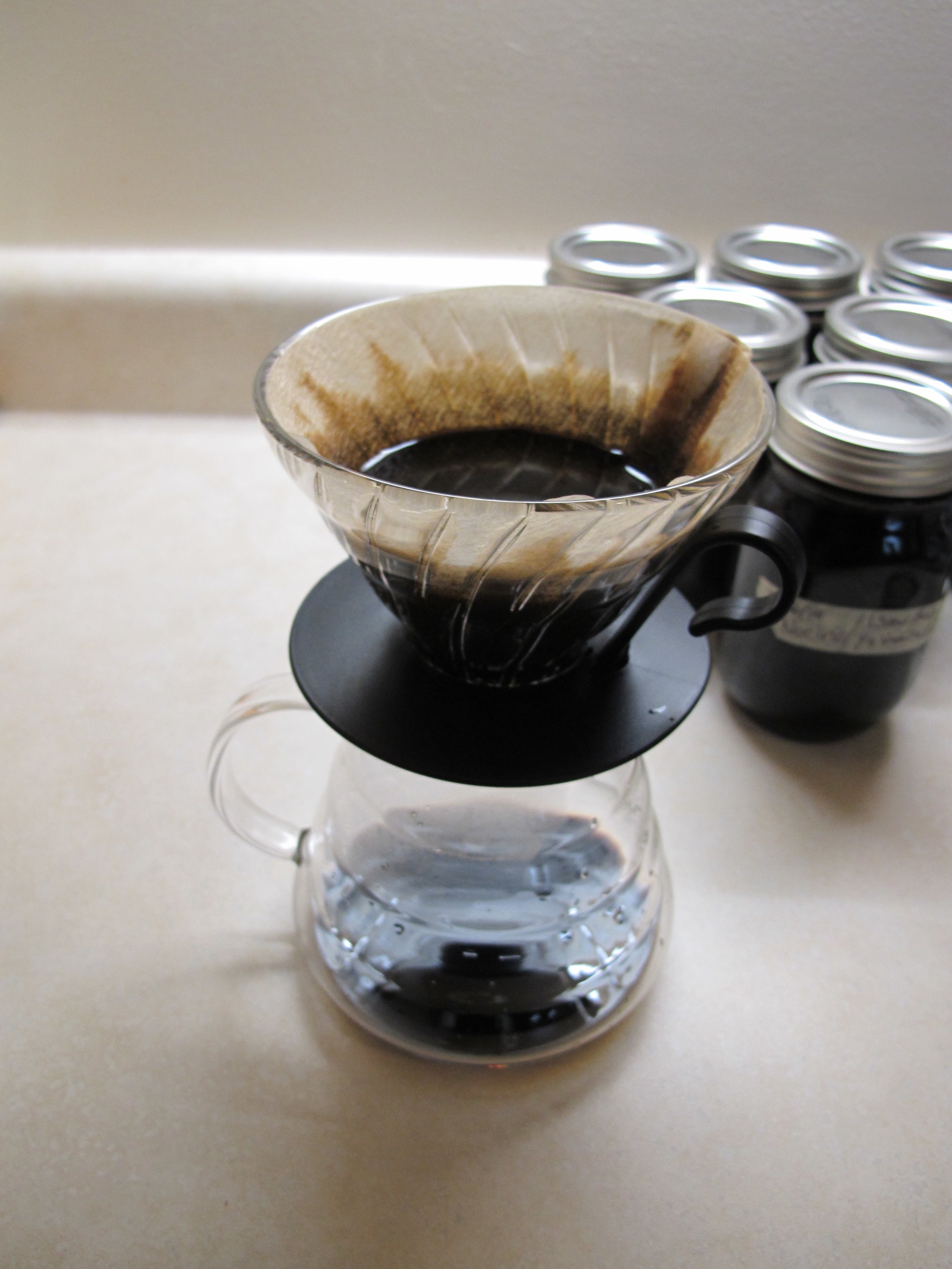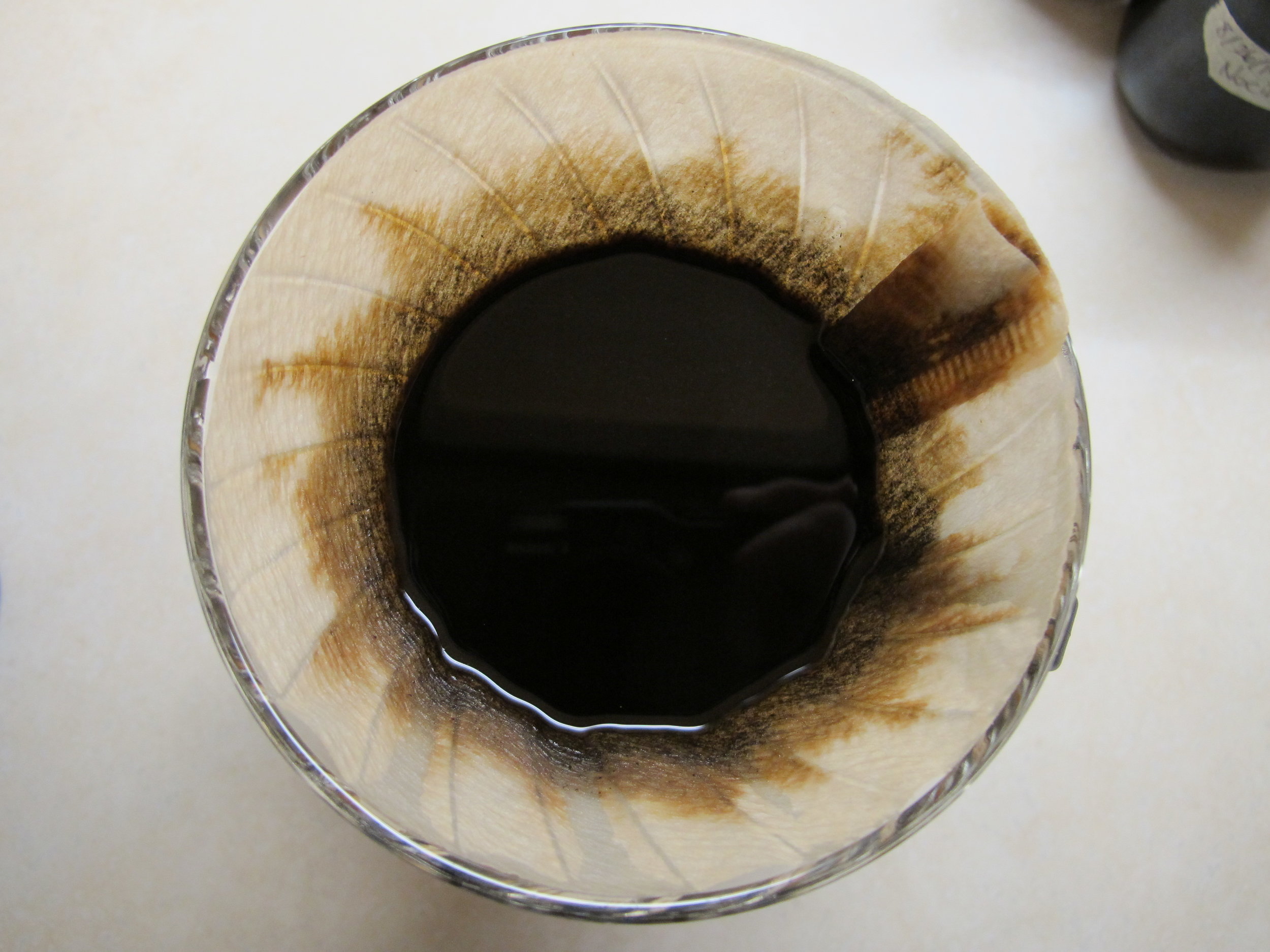Blind Vertical Tasting of Johnnie Walker
Last year with the help of David T. Smith (Summer Fruit Cup) and Virginia Miller (The Perfect Spot) we arranged a blind vertical tasting of Johnnie Walker Whisky. A vertical tasting is typically when you drink several vintages or expressions of the same wine, beer or whiskey. In our case we tasted 11 different bottlings of Johnnie Walker both from their core expressions as well as a couple of their more limited/less common expressions. We had Johnnie Walker Red Label, Red Label Export Blend (45.8% ABV), Explores' Club The Adventure, Black Label, Double Black, Green Label, Gold Label (pre-2013), Blue Label, Select Rye Cask Finish, Swing, and XR 21 Year Old. While Johnnie Walker has not been one of my favorite whiskies in the world I had strong opinions about a couple of them and I was excited to see if those beliefs held up when you strip away knowledge of price, age and bottle design.
The event's festivities were hosted by Virginia and her husband Dan, and while we had a good number of whiskies to taste, there were just five couples in attendance which made the event more intimate and relaxed. Now, while I suggested that we just bag the bottles and give them random markings like I'd done in my two previous blind tastings, David insisted that he would act as the steward for the evening and as usual he did an excellent job. David flighted the whiskies with the lighter character ones coming first and leading up to those with a heavier/smokier character at the end.
David and and my wife Tia brought out one whisky at at time which gave us the opportunity to taste, take notes and give it a score from 1-10. As much as possible, we refrained from talking about the whiskies until everyone marked their score so as not to unduly influence each other's perception of the spirit in the glass. For the most part I didn't have any idea which whisky was which except for the Select Rye Cask Finish and the Double Black which are so distinct that they stood out from the rest.
After David tallied all of the scores the clear favorite among the whole group was Johnnie Walker XR 21 Blended Scotch Whiskey. According to Diageo (owner of Johnnie Walker) the XR 21 was created to commemorate when Alexander Walker II was knighted by King George V. XR 21 happened to be served fifth in our tasting and when I looked back on my notes I was in the minority only giving it a 5 out of 10. I was also very curious to see how I and the other tasters rated the Blue Label. My opinion of this whisky has changed significantly over the years from ecstatic to meh. Not too surprisingly Blue Label came right around the middle of the pack which matched my score of 6 out of 10. Since I have Blue Label so infrequently I don't know if the quality has declined over the past decade as it's popularity and prestige has grown or that I have consumed a lot more high quality whisky. Blue Label is a nice whisky but for the price, I can't justify a re-purchase. Rounding out the bottom of the tasting were The Adventurer, Red Label Export Blend and Johnnie Walker Swing.
Going into the tasting I thought I would score Green and Gold near the top followed by Black, and Double Black. I also thought that I would score Red Label near the bottom however that wasn't exactly the case which is why I love blind tastings.
Here is how I ranked the 11 expressions of Johnnie Walker:
- Select Rye Cask Finish Blended Scotch Whisky Aged 10 Years
- The whisky picked up a lot of flavor for the Rye Cask and tastes sort of like a blend of American and Scotch Whisky.
- Double Black Blended Scotch Whisky (No Age Statement)
- Extra smokey and has a very full mouthfeel for a blended Scotch plus it's easy on the wallet.
- Red Label Blended Scotch Whisky (NAS)
- This was big surprise for me, I really like the flavor of Red Label its got a medium body and best of all I can get it at K&L Wines on sale for $14!
- Gold Label (pre-2013) 18 Year Old Blended Scotch Whisky
- A nice blended Scotch with a medium body and unfortunately much better than the current Gold Label Reserve being sold.
- Blue Label Blended Scotch Whisky (NAS)
- Lots of character in this blend and significant oak character from the long maturation which is partially why I gave it a lower score and some people love it.
- XR 21 Year Old Blended Scotch Whisky
- This blend has well balanced flavors between the fruit, oak, sweet and dry but for me the finish dropped off quickly and didn't leave a lasting impression.
- Green Label Blended Malt Scotch Whisky Aged 15 Years
- Lots of malt and a good balance of smoke and fruitiness though I marked it down for having a thinner mouthfeel and more heat on the palate. Unlike most other expressions of Johnnie Walker, the Green Label is a Blended Malt which means it does not contain any aged grain whiskies.
- Explorer's Club Collection - The Adventurer Blended Scotch Whisky (NAS)
- Main flavors are malt and smoke though this blend is very thin with a short finish.
- Black Label 12 Year Old Blended Scotch Whisky
- I didn't find the flavors to be very complex and it had thin mouthfeel and a long hot finish.
- Red Label Export Blended Scotch Whisky (NAS)
- Had an odd menthol note in the nose, mouthfeel was thin and it had a lot of alcohol on the finish.
- Swing Blended Scotch Whisky (NAS)
- My summary for this blend is light, thin and sharp. One of the best features of this whisky is its bottle, which has a rounded bottom which allows it to gently rock back and forth on a boat without tipping over.
Thank you to Virginia and Dan for hosting and supplying the Blue Label. Thanks also goes to David and Sara who supplied the XR 21 and Red Label Export Blend.






